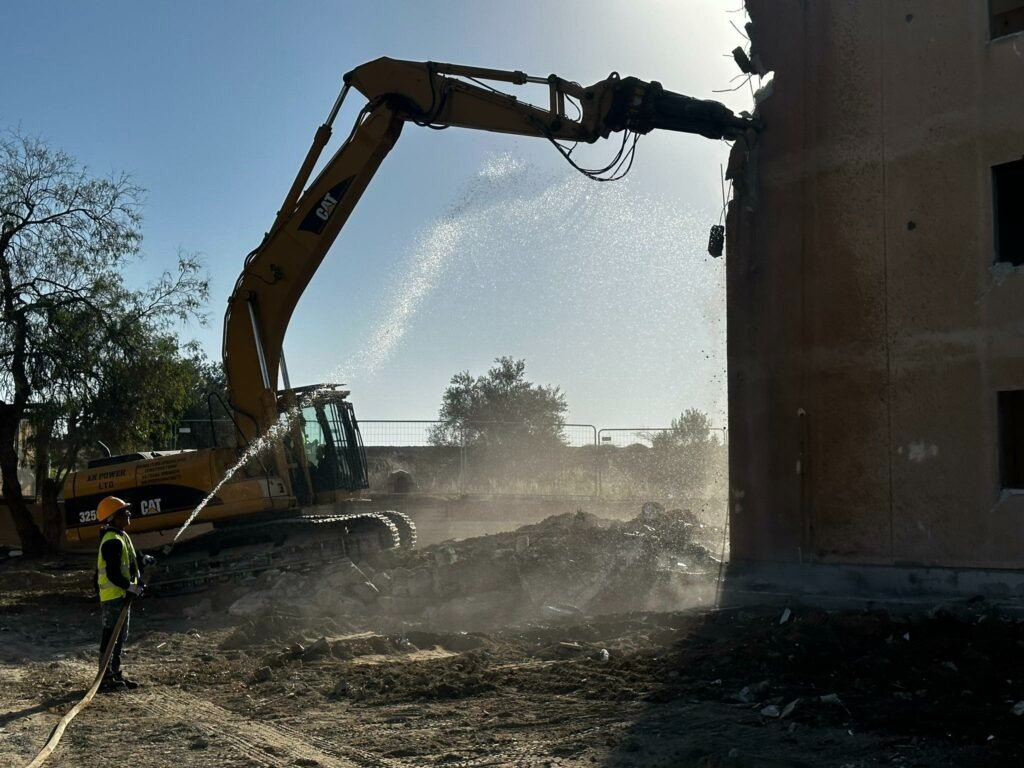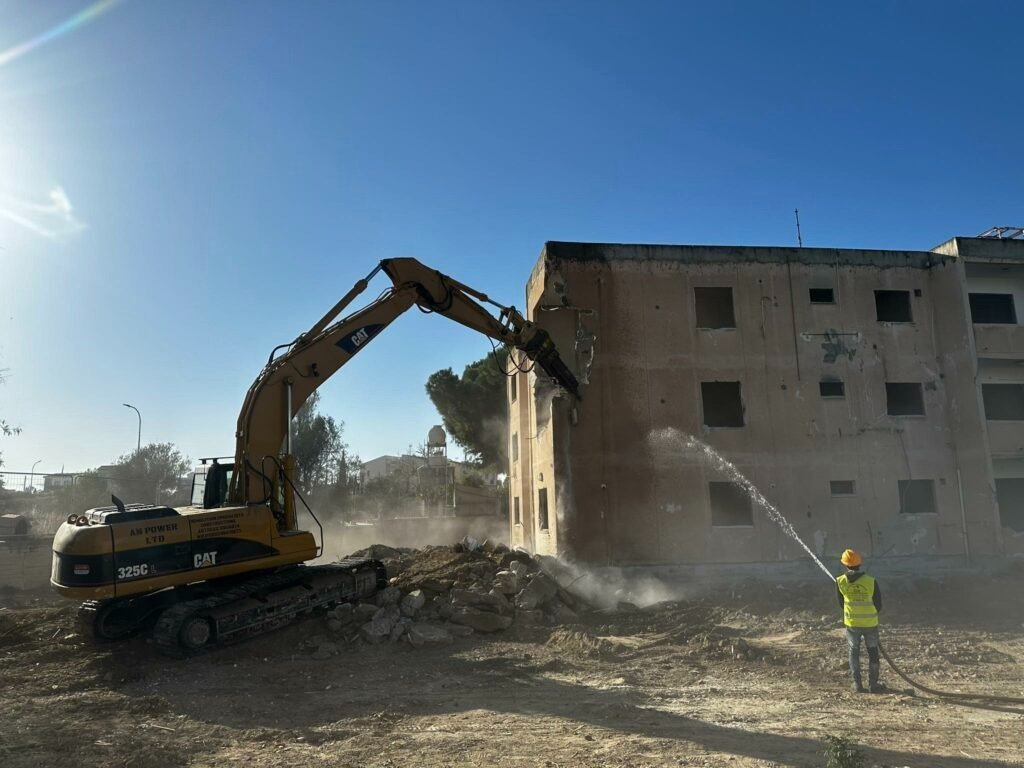Cyprus has commenced the demolition of the first two of 43 refugee apartment buildings deemed irreparable, marking the start of the ktíZO urban renewal plan announced last April by Interior Minister Konstantinos Ioannou.
The first demolitions, overseen by Ioannou himself, took place in refugee housing estates in Latsia, Nicosia, with plans to extend the initiative to Limassol and Larnaca.
The ktíZO plan, a comprehensive effort to address ageing and structurally unsound buildings, aims to rebuild or reinforce a total of 358 apartment complexes across Cyprus. This initial phase targets 43 buildings, housing a total of 375 apartments, primarily in government-run neighbourhoods.
According to the Ministry of Interior, the decision for demolition was driven by the high cost and impracticality of repairs. Many of these buildings, some nearing 50 years old, are unable to support modern necessities such as elevators, making them unsuitable for continued habitation.


Following the completion of the current demolitions, the government will turn its attention to the next phase of the ktíZO plan. This involves granting subsidies for repairs to apartment owners in 70 additional buildings, followed by annual subsidies to residents in 35 buildings each year, covering all structures under the plan.
The ktíZO initiative is a significant financial undertaking for the Cypriot government, with an estimated cost of €130 million over the next decade.
The refugee housing estates were built by the government of the Republic of Cyprus to house the majority of Greek Cypriot displaced people who were uprooted from their homes in the occupied north during the Turkish invasion of 1974.
The construction of residential units, apartment buildings and houses, in the government estates of displaced persons began in 1975 and continued until the mid-1990s, according to data from the Department of Town Planning and Housing of the Ministry of the Interior, while some residential units were also erected or reconstructed in the period between 2006-2011.
Many refugees remained for years in camps until they were given a house in a settlement or finished building their house in a self-housing area.
It is estimated that around 200,000 Greek Cypriots (40% of the Greek Cypriot population of the island) and more than 50,000 Turkish Cypriots were displaced from their homes in 1974.
Turkish Cypriots had started abandoning rural areas and mixed villages to move into enclaves during the outbreak of intercommunal violence in 1963-1964.
Read more:






